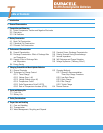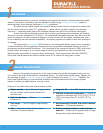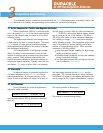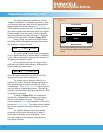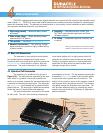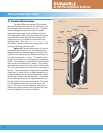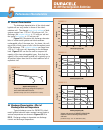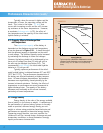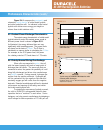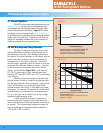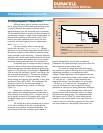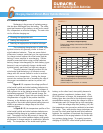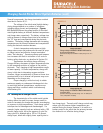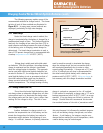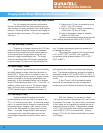
T
T
Ni-MH Rechargeable Batteries
able of Contents
1 Introduction
2 General Characteristics
3 Composition and Chemistry
3.1 Active Components: Positive and Negative Electrodes
3.2 Electrolyte
3.3 Cell Reactions
4 Battery Construction
4
.1 Basic Cell Construction
4.2 Cylindrical Cell Construction
4.3 Prismatic Cell Construction
5.1 General Characteristics
5.2 Discharge Characteristics: Effect of Discharge Rate
and Temperature
5.3 Capacity: Effect of Discharge Rate
and Temperature
5.4 Energy Density
5.5 Constant Power Discharge Characteristics
5.6 Polarity Reversal During Overdischarge
5.7 Internal Impedance
5.8 Self-Discharge and Charge Retention
5.9 Voltage Depression (“Memory Effect”)
6.1 General Principles
6.2 Techniques for Charge Control
6.2.1 Timed Charge
6.2.2 Voltage Drop (-∆V)
6.2.3 Voltage Plateau (zero ∆V)
6.2.4 Temperature Cutoff
6.2.5 Delta Temperature Cutoff (∆TCO)
6.2.6 Rate of Temperature Increase (dT/dt)
6.3 Charging Methods
6.3.1 Duracell’s Recommendation:
Three-Step Charge Procedure
6.3.2 Low-Rate Charge
6.3.3 Quick Charge
6.3.4 Fast Charge
6.3.5 Trickle Charge
6.4 Thermal Devices
5 Performance Characteristics
6 Charging Sealed Nickel-Metal Hydride Batteries
7 Cycle and Battery Life
7.1 Cycle Life
7.2 Battery Life
8 Safety Considerations
9 Proper Use and Handling
9.1
Care and Handling
9.2 Transportation
9.3 Waste Management: Recycling and Disposal



